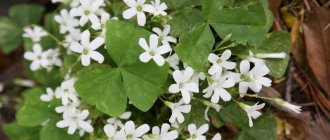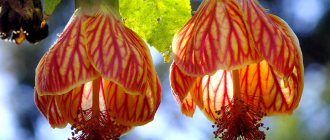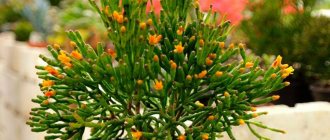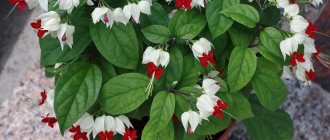Rose Mix belongs to the Rosaceae family and is a low-growing selective variety, bred specifically for growing at home.
It has small sizes and is conventionally divided into groups: from 30–50 cm ( miniature ) to 50–65 cm ( patio ); has the ability to bloom repeatedly and for a long time, and thanks to Dutch breeders, it is presented on the market in a variety of colors and subvarieties.
In the 19th century, certain varieties of domestic roses came to Europe from the tropical forests of China and quickly won the love of flower growers due to their high decorative value and compact size. If you follow the rules of care, growing this whimsical plant at home or in the garden will not be difficult.
What kind of plant is this?
Botanical description
Rose mix belongs to the Rosaceae or Rosehip family . This variety was bred by breeders specifically for growing at home.
Peculiarities
The plant is a small shrub up to 65 centimeters high.
The size and color of the buds depend on the type of flower. As a rule, this is a miniature rose endowed with a delicate aroma. This variety of roses can bloom several times a year. At the same time, the flowers on the plant retain their color and aroma for a long time.
Top dressing
Rosa Mix spends a lot of effort on forming buds. Therefore, it is important to support your pet with regular feeding. Apply fertilizers once every two weeks in the evening. Be sure to moisten the soil before the event. But keep in mind that you cannot feed the plants during the first month after transplantation. In addition, fertilizers are contraindicated for sick specimens.
For feeding, use mineral complexes intended for flowering plants and organic fertilizers, for example, mullein solution. And also sometimes spray the rose foliage with special nutritional compounds. After flowering is complete, feed the beauty with saltpeter or superphosphate.
Subvarieties and their photos
Parade
Low plant (40 – 45 cm). Pleases with lush flowering for 5 - 6 months. Then follows a two-month break. Best adapted to home conditions.
Patio hit
The rose belongs to the floribunda group . The stem length is 50 – 55 cm. Large flowers can be of different shades, they even have two-color petals. Blooms long and profusely.
Mini
Dwarf plants (up to 40 cm). The buds can be either small or large in size.
Danica
A small plant about 30 cm high. The size of the petals in a bud is approximately 3 - 5 cm. Their color may vary.
You may be interested in learning about other types of indoor roses, namely the Cordana variety and bush roses.
Description of the variety
Almost all representatives of the Cordana mix rose are residents of temperate and subtropical climates. For the first time, dwarf tea roses were brought to Europe from China. Later they were crossed with other types of roses, resulting in the first miniature representatives of the family. Rose Cordana was named after V. Cordes, the breeder who bred it.
Many varieties of miniature roses sold are varieties of the Cordana rose. They may have some differences in the shape of the bush, colors (there are white, pink, yellow, red). They grow no more than 30 cm in length. The leaves have a rich green tint, closer to emerald. The main feature of the Cordana rose is its lack of scent. Therefore, people prone to allergies can grow it.
Popular varieties of rose Cordana mix:
- Classic;
- Caliber;
- Pearl;
- Ballet;
- Magnolia.
How to grow an indoor flower in a pot?
Landing
Growing a mixed rose from seeds is a complex and time-consuming task . Under natural conditions, seeds are kept in the ground at a certain temperature throughout the winter, which promotes accelerated germination. Similar conditions must be created at home. What is needed for this?
- A material capable of retaining moisture (cloth napkin, cotton pad, etc.) must be soaked in a solution of hydrogen peroxide, rose seeds placed on it, and covered with a layer of the same material.
- In this form, the seeds are placed in a plastic container or plastic bag and sent to the lower compartment of the refrigerator for 2 months. During this time, you need to monitor their condition and, if necessary, moisturize the surrounding matter.
- Sprouted rose seeds are planted in seedling pots. The room temperature should be approximately 18-20 °C. Sprouts need good lighting for 10 hours.
Watering should be moderate. Excess moisture can lead to the death of the plant. In order for the root system to develop sufficiently, the first buds should be cut off.
How to care?
Rose mix requires constant monitoring and control. Ignorance and failure to follow the rules of care can lead to illness and death of the plant.
Conditions of detention:
- Place . This rose will be comfortable on any windowsill, except the northern one. The east side is best. The plant should be protected from direct sunlight. If the window is facing south, on a sunny day you need to close the blinds or create a protective screen.
- Temperature . In the summer, the most comfortable temperature for rose mix will be 18 – 23 °C. In winter, the flower should be moved to a cooler place (8 - 13 ° C). Too cold air leads to disease of the root system.
- Humidity . For normal growth of rose mix, the air in the room must be high or moderate humidity. During the heating season, the plant should be regularly sprayed with warm water. Once a week it is useful to give your pet a shower. The soil should be covered with polyethylene.
- Lighting . Rose loves long-lasting bright diffused light, BUT NOT DIRECT SUN RAYS.
- Watering . In summer, the flower is watered moderately 2 times a day - morning and evening. In winter, during the dormant period, the frequency of watering is reduced to once every two days in small portions. The water must first be settled. At the time of watering it should be at room temperature. The soil should not be allowed to dry out. But too wet soil can oxidize.
- Feeding .
In the spring, before active flowering, the plant needs to be fed 4–5 times. No longer recommended. Excess fertilizer stimulates active leaf growth. The number of colors decreases. It is better to apply complex fertilizers for flowering plants. You can also alternate phosphorus, potassium and nitrogen fertilizers. In the fall, after flowering, the soil is saturated with saltpeter and superphosphate. Fertilizers should be applied strictly according to the instructions offered by the manufacturers. - Trimming . Yellowed and dried leaves are removed regularly. Old stems and wilted buds should also be cut off as they appear. At the end of the growing season in the fall, mandatory pruning is carried out. The stems are shortened to 10 cm. 3–5 buds are left on the branches. This procedure not only shapes the bush, but also promotes early and lush flowering.
Transfer
A rose mix is transplanted in two cases:
- If the plant is new, it just arrived from the store.
- If the roots have completely filled the container and need to be replanted into a larger pot.
The new plant is not replanted immediately . He needs several days to get used to the new conditions.
- Choosing a pot. Its diameter should be 2-4 cm larger than before, and its height should be 5-7 cm. There must be a drain hole at the base.
- Priming. You can buy it ready-made in the store, or prepare it yourself. It should consist of 1 part sand, 4 parts humus, 4 parts turf with the addition of complex fertilizer.
- A layer of expanded clay 1 cm thick is laid on the bottom of the pot. Next, a layer of earth is poured. It is recommended to add moss and fertilizer.
- Before transplanting, the rose is shed generously with water. When the earthen ball is well wet, it is removed from the pot and replanted. There is no need to shake the roots.
- The plant in the new place is covered with soil. The soil is compacted. No additional watering is required. It is enough to spray the foliage with water from a spray bottle. After a day, the rose needs to be watered.
Prevention from pests and diseases
To prevent the rose mix from being infected by pests and diseases, it must be regularly sprayed, rinsed with a shower and maintained at optimal air humidity in the room.
Reproduction
Mixed roses are propagated in two ways: by stem cuttings in the spring and by pruned branches in the fall. Cuttings intended for planting should be no more than 15 cm and have 3–4 living buds. They are placed in a container with water. When roots appear on the cuttings, they are planted in the ground .
Transfer
To make the plant take root easier and faster, cut off all the buds without pity before the event. Don't worry, after a while the culture will release new ones. Transplant a miniature rose in this way:
- At the bottom of the container, place a centimeter layer of drainage consisting of pebbles, brick chips or expanded clay. Sprinkle it with a small layer of soil.
- Carefully remove the rose from the pot without destroying the earthen ball.
- Place the flower in a new container and fill the voids with soil. To compact the soil, lightly tap the sides of the pot.
- Spray the foliage with warm water, but do not water the flower.
- After transplanting, place the crop in a shaded area.
- The next day, water the soil and move the pot to a permanent place.
A similar event will need to be carried out in the spring, as the home rose Mix grows.
Diseases and pests
Most often, the mixed rose is affected by spider mites and powdery mildew.
- Spider mite .
Appears due to insufficient humidity. For prevention, the plant should be regularly sprayed and bathed in the shower. Small bugs of red, red or dark brown color occupy the lower part of the leaves, gnaw holes in them, and entwine the shoots with a thin web. As a result, young shoots dry out and fall off the plant. To combat spider mites, you should use special preparations offered in stores. You can also use folk remedies (garlic infusion or tobacco infusion). - Powdery mildew - white coating on leaves and buds . If urgent measures are not taken, it can cause the death of the plant. How to treat? Trim off all affected areas. Remove the top layer of soil. Adjust the watering schedule so that there is no excess moisture. Spray the bush with a 1% solution of Bordeaux mixture or a 0.4% solution of copper oxychloride. For severe infestations, a fungicide should be used.
Trimming
If you want to get compact and lush bushes of the domestic rose Mix, then you cannot do without formative and sanitary pruning. At the end of winter - beginning of spring, remove all weak, tangled and damaged shoots. Leave 4-5 strong branches on the bush, each with 3-5 “eyes”. Make sure the middle remains free.
In summer, be sure to remove faded buds. They take away strength from the plant, and also look unattractive. Trim the buds from 3-4 cm of the stem. In autumn, shorten the branches, leaving 3-4 buds on each shoot.
Errors in care
- Dry air can cause leaves to dry out, buds to fall off, and shoots to change color. Proper regular watering, spraying, showering will help.
- Pests . They damage the shoots and root system, the plant loses its leaves and stops blooming. Treatment with special preparations and bathing of stems and bushes will help.
With proper care, an indoor mixed rose can delight its owners with abundant and long-lasting flowering all year round. Knowing the basic requirements for the maintenance of this plant, achieving such a result is not very difficult.
Features of reproduction
Rose Mix reproduces in two ways: by cuttings and grafting on rose hips. But only shoots that have their own root system are suitable for growing flowers in the house. You can choose any time, but cuttings cut at the beginning of summer will take root most effectively. For cuttings, it is best to use strong young shoots with buds. First, the cuttings are rooted in small pots and then transplanted.
It is recommended to cut off the first buds. Making your home cozy is the oldest human habit. So make your home beautiful too!
Step-by-step landing procedure for beginners
Hoya Kerry care at home
An experienced gardener can easily plant a rose in the ground with his eyes closed. But it will be useful for a beginner to give some tips on this procedure.
Choosing a suitable location
In general, the rose is a rather picky plant. Therefore, you need to choose a site for planting it responsibly. It is advisable to avoid lowlands - cold snowy water accumulates here in the spring, which can freeze the roots. Also, roses do not tolerate cold winds well, so it is best to plant them under the protection of some object - for example, on the south side of a house, garage, barn or dense hedge.
Attention! The optimal temperature for germinating seedlings is from +18 to +25 degrees Celsius. The ideal place is a slightly shaded area that is well lit only in the morning
Otherwise, on a hot summer day, the bush rose may get sunburned.
The ideal place is a slightly shaded area that is well lit only in the morning. Otherwise, on a hot summer day, the bush rose may get sunburned.
Soil preparation
Everything here is quite simple and standard - if the soil is depleted, then it won’t hurt to add a little mineral fertilizer. When digging a hole, it is advisable to get rid of large stones, old roots and other obstacles.
If the plants in the area suffer from high humidity, then you should take care of drainage - drainage of water so that the roots of the rose do not rot.
Planting a seedling
Planting a rose seedling in open ground
A hole that is too large for planting hybrid and other roses is not needed - a size of 40x40 cm with a depth of 30-40 cm is sufficient. It is advisable to cover the bottom with a layer of drainage - expanded clay or pebbles - about 10 cm high will do.
The rest of the volume should be filled with a mixture of compost and chernozem - on such a substrate the rose will grow quickly and bloom profusely.
The landing procedure itself is very simple. You need to dig a suitable hole so that the entire root system can fit without being deformed. The seedling is lowered into it and, holding it with one hand, you need to fill it with soil, keeping the roots in a straightened state. After this, the earth is compacted a little. And that’s it, the landing can be considered complete.
Watering the seedling after planting
Immediately after planting, it is advisable to water the seedling abundantly - this helps strengthen it in the soil. In addition, if it is a particularly hot month in May, then it would be a good idea to shade the bush a little so that it does not dry out before the root system has established itself in a new place.
Feeding a young bush
With feeding, everything is quite simple. Immediately after planting, you can add a little phosphorus fertilizer dissolved in water - thanks to this, the root system will develop more actively.
After a few weeks, when the leaves appear, you can also use nitrogen fertilizers to increase the volume of green mass.
Attention! Nitrogen fertilizers cannot be used in the second half of summer so that the plant begins to prepare for winter. Finally, in early to mid-September (in the northern regions and in Siberia at the end of summer), fertilize again with phosphorus fertilizers so that the rose can easily survive the winter
Finally, in early to mid-September (in the northern regions and in Siberia at the end of summer), fertilize again with phosphorus fertilizers so that the rose can easily survive the winter.











